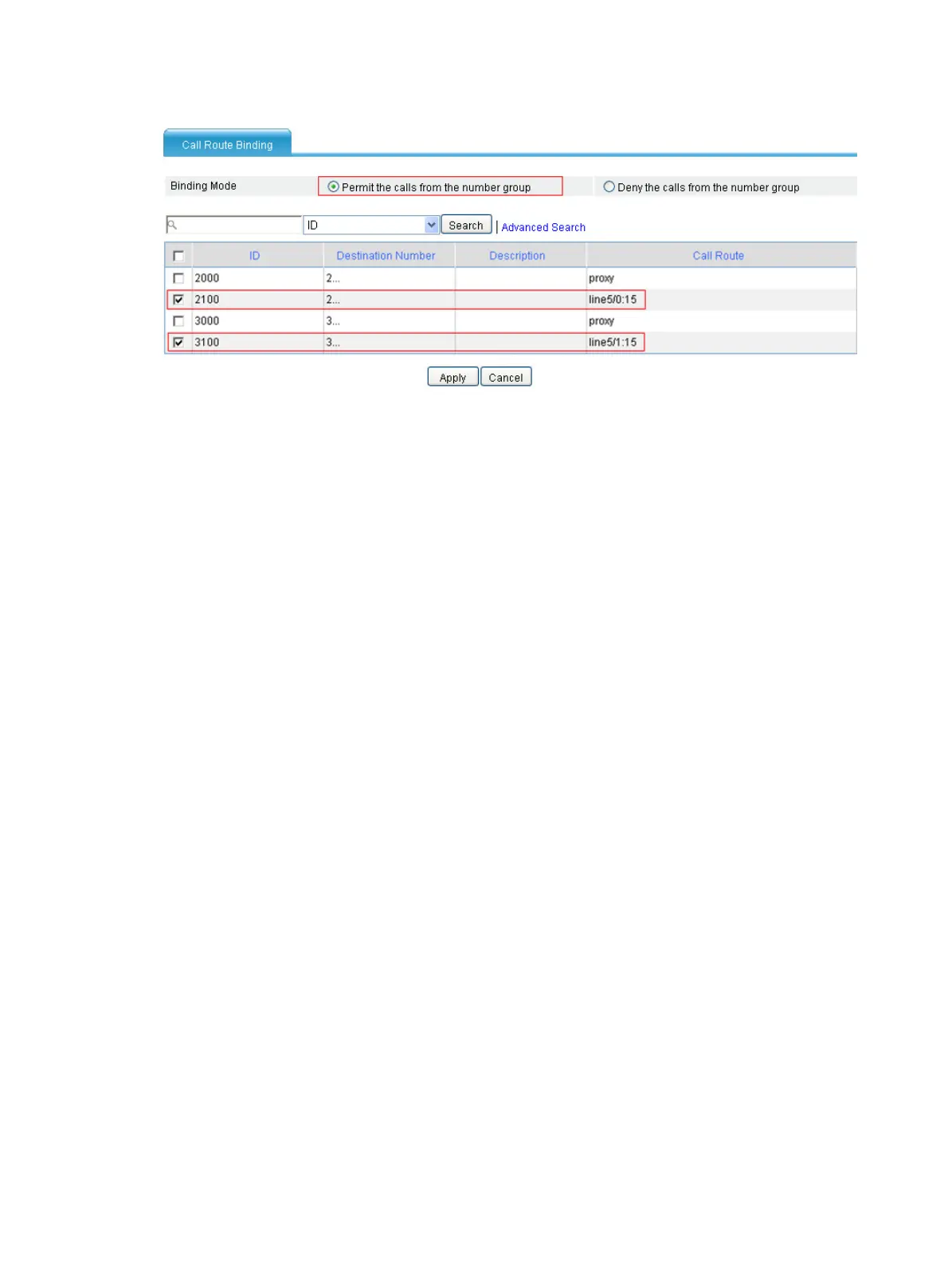260
Figure 648 Call route binding page (II)
12. Select Permit the calls from the number group for Binding Mode.
13. Select the checkboxes of call routes 2100 and 3100.
14. Click Apply.
Configuring Router B
Add a call route:
1. Specify the call route ID as 2100, the destination number as 2…, and the trunk route line as
1/0:15 on the call route configuration page.
2. Select the Send All Digits of a Called Number option in the Called Number Sending Mode
area when you configure the advanced settings of this call route.
Configuring Router C
Add a call route:
1. Specify its call route ID as 3100, the destination number as 3..., and the trunk route line as
1/0:15 on the call route configuration page.
2. Select the Send All Digits of a Called Number option in the Called Number Sending Mode
area when you configure the advanced settings of this call route.
Configuring number substitution
Network requirements
As shown in Figure 649, there is a PBX to form a local telephony network at place A and place B,
respectively. The following requirements should be met:
• These two local telephony networks communicate through two voice gateways. Subscribers in
one PBX network can make ordinary calls to remote subscribers in the other PBX network over
a VoIP network.
• Configure two FXO trunk lines between each router and its PBX and enable hunt group to
realize trunk line backup.
• There are a financial department, market department, and sales department at both place A
(area code 021) and place B (area code 010). A department at place A only needs to know the
telephone numbers of the local departments and the area code of place B when calling a
department at place B. For example, the financial department at place B can dial 3366 to call
the local market department. The financial department at place B can dial 0103366 to call the
market department at place A, and the caller ID displayed on the terminal at place A is 0211234,
that is, the area code of place B + telephone number of the financial department at place B.

